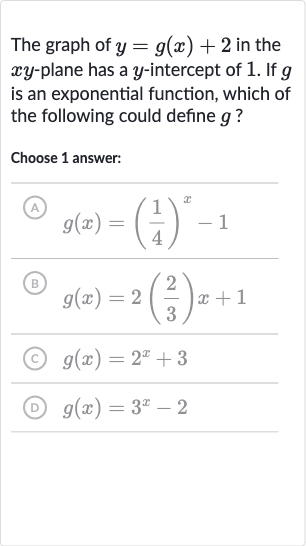Full solution
Q. The graph of in the -plane has a -intercept of . If is an exponential function, which of the following could define ?Choose answer:(A) (B) (C) (D)
- Set and solve: To find the y-intercept of the graph of , we set and solve for .
We are given that the y-intercept is , so: - Find : Solving for , we get:So, the function must satisfy the condition .
- Check each option: Now we will check each option to see which one satisfies .
(A)
This does not satisfy . - Option (A) calculation: This does not satisfy .
- Option (B) calculation: This does not satisfy .
- Option (C) calculation: This satisfies .
More problems from Write equations of cosine functions using properties
QuestionGet tutor help
QuestionGet tutor help
QuestionGet tutor help
QuestionGet tutor help
QuestionGet tutor help
QuestionGet tutor help
QuestionGet tutor help
QuestionGet tutor help
QuestionGet tutor help

